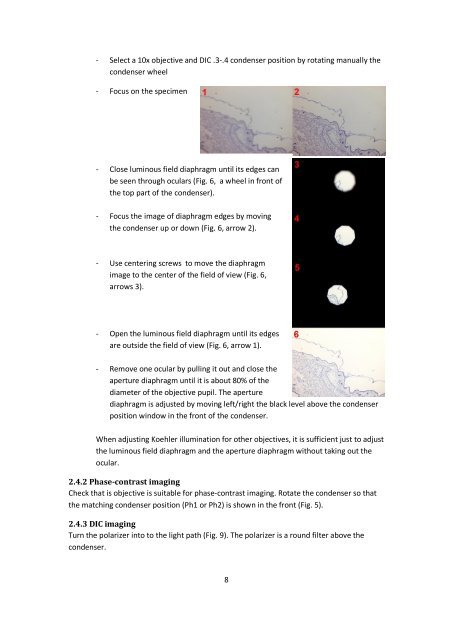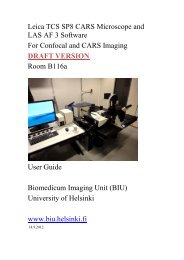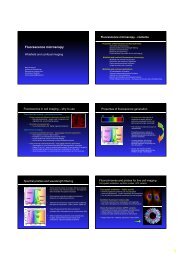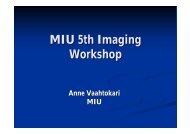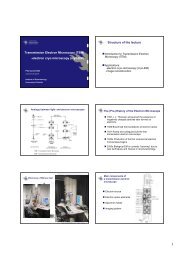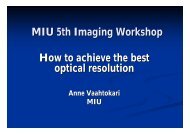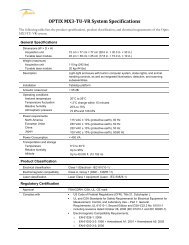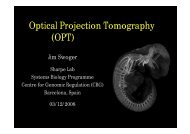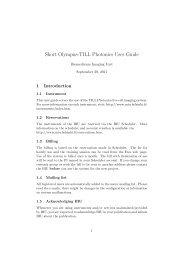MIU User Guide For Zeiss AxioVert 200 Inverted Fluorescence ...
MIU User Guide For Zeiss AxioVert 200 Inverted Fluorescence ...
MIU User Guide For Zeiss AxioVert 200 Inverted Fluorescence ...
- No tags were found...
You also want an ePaper? Increase the reach of your titles
YUMPU automatically turns print PDFs into web optimized ePapers that Google loves.
- Select a 10x objective and DIC .3-.4 condenser position by rotating manually thecondenser wheel- Focus on the specimen- Close luminous field diaphragm until its edges canbe seen through oculars (Fig. 6, a wheel in front ofthe top part of the condenser).- Focus the image of diaphragm edges by movingthe condenser up or down (Fig. 6, arrow 2).- Use centering screws to move the diaphragmimage to the center of the field of view (Fig. 6,arrows 3).- Open the luminous field diaphragm until its edgesare outside the field of view (Fig. 6, arrow 1).- Remove one ocular by pulling it out and close theaperture diaphragm until it is about 80% of thediameter of the objective pupil. The aperturediaphragm is adjusted by moving left/right the black level above the condenserposition window in the front of the condenser.When adjusting Koehler illumination for other objectives, it is sufficient just to adjustthe luminous field diaphragm and the aperture diaphragm without taking out theocular.2.4.2 Phase-contrast imagingCheck that is objective is suitable for phase-contrast imaging. Rotate the condenser so thatthe matching condenser position (Ph1 or Ph2) is shown in the front (Fig. 5).2.4.3 DIC imagingTurn the polarizer into to the light path (Fig. 9). The polarizer is a round filter above thecondenser.8


